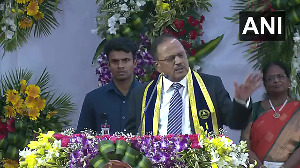If you have been on the Char Dham yatra and believe you know about the Uttarkhand part of this holy circuit, test your knowledge with this quiz.

Uttarakhand's Char Dham is easily one of the most sought after holy treks in India for a multitude of reasons.
Located in the far-flung corners of the Garhwal region, these ancient temples hold phenomenal significance for Hindus.
While the original Char Dham Yatra refers to the four holy sites of Badrinath (Uttarakhand), Puri (Odisha), Rameswaram (Tamil Nadu) and Dwarka (Gujarat), we have narrowed down the focus to Uttarakhand for our special quiz.
This smaller circuit of the pilgrimage consists of Yamunotri, Gangotri, Kedarnath and Badrinath, and it is believed that every Hindu must take this spiritual journey once in their lifetime.
If you have been on this yatra before and believe you are well-versed with these Himalayan holy spots, test your knowledge with this quiz.
Keep clicking to go to the next question!
The Hindu tradition of parikrama suggests that the yatra should move from left to right. The pilgrimage commences from the Yamunotri temple, the western-most shrine dedicated to the goddess Yamuna.
It proceeds to the Gangotri temple, then moves to the Kedarnath temple, and finally concludes at the Badrinath temple.
Located just below the Badrinath temple, Tapt Kund is a natural hot water spring where devotees take a dip before visiting the temple.
The Badrinath temple is located on the left bank of the Alaknanda river, which is one of the two major headstreams -- Alaknanda and Bhagirathi -- of the Ganga.
Located near the Gangotri temple, the Jalamagna Shivling is a natural rock Shivling which is said to be visible only during the winter months. According to Hindu texts, it is where Lord Shiva held the Ganga in his dreadlocks.
It is believed that the Badrinath temple was once also worshipped as a Buddhist shrine. The discernible Buddhist architecture of the temple indicates this.
According to religious texts, the original temple of Kedarnath was built by the Pandavas after they won the battle of Kurukshetra.
The Badrinath murti was discovered by Adi Shankaracharya at the Alaknanda river. The original temple was built in the Garud Caves, near Tapt Kund.
The Badrinath Dham is dedicated to Lord Vishnu, who is considered the protector and preserver of the divine Hindu Trinity -- Brahma, Vishnu and Shiva.
At 12,106 feet, Tungnath is one of the highest Shiva temples in the world. The Kedarnath temple, by comparison, is located at 11,755 feet. Tungnath is one of the five Panch Kedar temples located in Uttarakhand.











